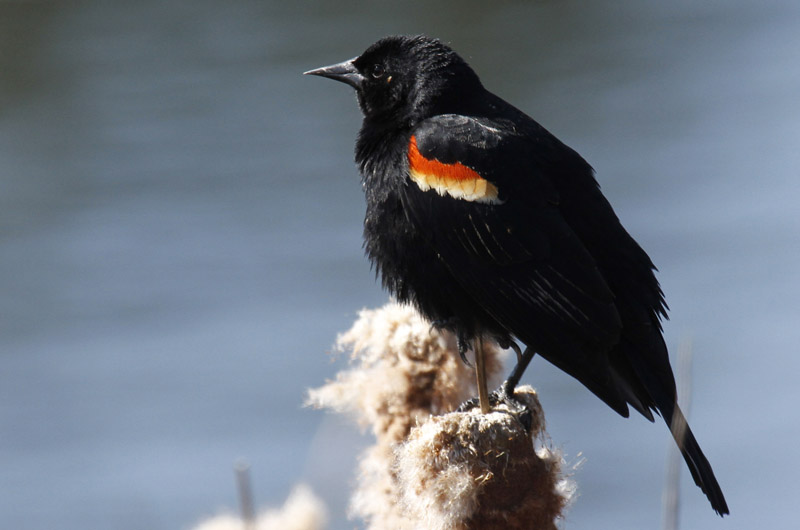Last week Lanny McDowell reported that Happy Spongberg spotted an osprey on Feb. 22, an unusually early date. There have been a few other sightings reported on the website ebird.org in February: Feb. 14 and 19 from Cape May and southern New Jersey; Feb. 21 on Long Island Sound; and most recently on Feb. 25 in Maryland. So the early birds are around. In recent years osprey seem to be returning earlier. The traditional time for their spring arrival had been mid to late March.
Even if you are a well-known birder, either multiple observers or a photograph are helpful to confirm unusually early sightings. This can be difficult for those of us who tend not to carry a camera around. In past years, early sightings of osprey have turned into red-tailed hawks, great black-backed gulls or herring gulls, perhaps because we are all eager for any indications of the coming spring. These species will all perch on osprey poles, and from a distance anyone can make this mistake. Consult any field guide as a reference, but their black and white head pattern, long crooked wings, distinctive ki-ki-ki-ki-ki call and habit of hovering and diving into water to catch fish are all distinctive field marks.
More osprey sightings will come soon, as March is now underway.
Bird Sightings
Ken Magnuson observed the bird of the week, a red-shouldered hawk in Katama on Feb. 27. He observed and photographed the variegated buff and white undersides, streaked reddish shoulders and mostly black tail with its multiple narrow white bands. All of these fieldmarks distinguish it from the more expected red-tailed hawk. Interestingly, he observed a red-shouldered hawk in about the same location last year, on Feb. 10.
Maggie Bresnahan, Lanny McDowell and Mr. Magnuson have all observed the returning red-winged blackbirds and common grackles. I like to think that our returning red-wings head straight to their nesting grounds to begin singing which will establish their breeding territories. Wintering residents and migrants heading further north are still here, but they stay flocked, keep their red epaulettes mostly covered and do not sing very much. Mr. Magnuson observed them singing all over Katama, so I will say they are likely our resident birds.
Two male long-tailed ducks have been frequently observed in the shallow water just off East Chop where the detour begins. They can be watched from the top of the bluff there, but be cautious and do not get too close to the edge of the bluff as waves have undercut the sandy cliffs there.
Jeff Bernier found three female common goldeneyes in Menemsha Harbor on Feb. 27.
On Feb. 28, Joanie Ames had a flock of robins pass through her yard. She counted 35 on the ground and many more in the trees. They are probably seeking berries at this time of the year. Cedar waxwings are another berry-eating species, and Dan Bradley has observed both waxwings and robins gorging themselves on holly berries on March 24. Several others report that they are also present in the junipers at the beginning of New Lane in West Tisbury. Matt Pelikan has a flock of 35 visiting his yard in Oak Bluffs. They will disperse to other areas once these berries have been consumed.
On Feb. 28, Bill Bridwell found a male ring-necked pheasant in a most unusual location — strolling past the police station in Oak Bluffs. The closest appropriate habitat is probably Farm Neck.
Matt Pelikan was bicycling along State Beach on Feb. 28 and heard a horned lark singing on the Oak Bluffs side of the Big Bridge. They are present there year-round. This is the most reliable place to see and hear their song — a series of high-pitched tinkling notes coming from a well camouflaged bird. Early morning is the best time to hear them as their soft song is easily drowned out by the passing vehicles.
And on Leap Day, Feb. 29, Robert Green emailed his report of a female bufflehead, a first for his man-made pond that he has been watching for 38 years. This is a somewhat unusual site for this small duck that is common on most saltwater ponds and larger freshwater ponds. She seems to get along fine with the much larger resident mallards.
Finally, I would like to thank Lanny McDowell for writing last week’s column about his pelagic trip out of Hyannis, and for his most-helpful article about identifying gulls. I was in El Paso, Tex., watching western species like roadrunners, black-throated sparrows, white-winged doves, cinnamon teal and a diverse array of cacti in the Chihuahuan Desert.
There are lots of birds around, so please get out looking for them, and be sure to report your bird sightings to birds@mvgazette.com.
Robert Culbert leads guided birding tours and is an ecological consultant living in Vineyard Haven.





Comments
Comment policy »